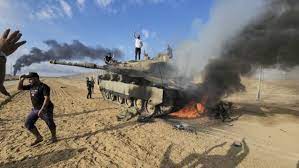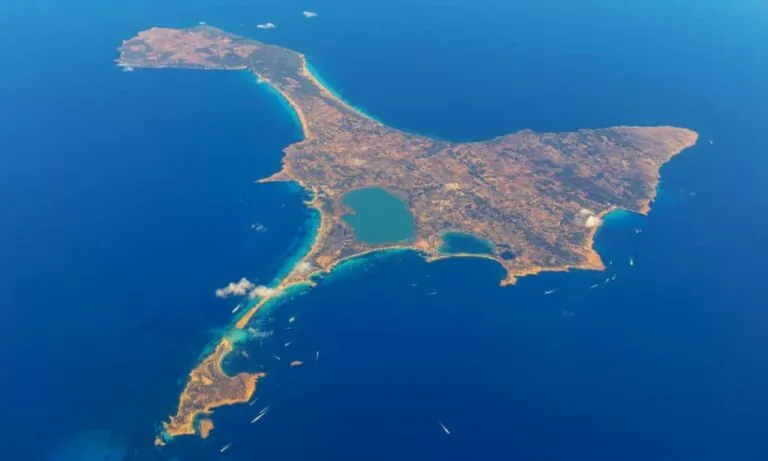What is Hamas? the Conflict in Israel and Gaza Strip, and Other Related Queries
In just over a day, the conflict between Israel and the Palestinian group Hamas has escalated, resulting in nearly 1,000 dead.
Over the weekend, Israel was the target of a remarkable assault by Hamas, as they detonated sections of the heavily fortified security barrier and infiltrated Israeli settlements along the Gaza border.
Prime Minister Benjamin Netanyahu’s government has issued a warning of “a long and difficult war” in response to the recent move. Israeli jets are currently targeting the Gaza Strip by destroying high-rise buildings and residential areas that belong to civilians.
So, what exactly is Hamas, the group that is currently at the forefront of the ongoing conflict? Let’s take a closer look at what you need to know about them:
What is the group Hamas?
The term Hamas is an acronym for the Islamic Resistance Movement, which translates to “zeal” in Arabic.
The Gaza Strip, with a population of over two million people, is politically controlled by the group. It is a territory spanning approximately 365 square kilometers (141 square miles) and is currently blockaded by Israel.
Since 2007, Hamas has held power in the Gaza Strip following a short-lived conflict against Fatah forces loyal to President Mahmoud Abbas, who serves as the head of both the Palestinian Authority and Palestine Liberation Organization (PLO).
When was Hamas formed and what is its aim?
In 1987, Sheikh Ahmed Yasin, an imam, and his aide Abdul Aziz al-Rantissi founded the Hamas movement in Gaza. This was during the beginning of the first Intifada, which was an uprising against Israel’s occupation of the Palestinian territories.
Initially stemming from the Muslim Brotherhood in Egypt, the movement gave rise to the Izz al-Din al-Qassam Brigades, a military faction dedicated to achieving the liberation of historic Palestine through armed conflict against Israel.
In addition, social welfare programmes were extended to Palestinian victims who suffered due to the Israeli occupation.
What are the Palestinian group’s principles?
Hamas does not acknowledge the statehood of Israel, unlike the PLO. However, it does accept the concept of a Palestinian state based on the borders of 1967.
Back in 2017, Khaled Meshaal, the leader-in-exile of the Palestinian group, made a resolute statement, vowing to not give up any part of Palestinian land, despite the mounting pressures and the prolonged occupation. Meshaal affirmed that the Palestinian home soil is non-negotiable and that they will not bow down to any external forces. The statement reflects the strong determination of the Palestinian people to defend their homeland and their unwavering commitment to achieving their aspirations for freedom and sovereignty.
In the mid-1990s, Israel and the PLO negotiated the Oslo peace accords, which were met with violent opposition from Hamas.
The establishment of a Palestinian state within its own borders has been the formal commitment of the entity. Its approach towards achieving this goal has involved carrying out attacks on Israeli soldiers, settlers, and civilians in both the occupied Palestinian territories and Israel.
Israel, the United States, European Union, Canada, Egypt, and Japan all designate the group, either as a whole or in some cases just its military wing, as a “terrorist” organization.
Who are its allies and supporters?
Hamas forms a regional alliance with Iran, Syria, and Hezbollah in Lebanon, which shares a common opposition towards US policies regarding the Middle East and Israel.
The joint operations room in Gaza is primarily comprised of Hamas and Islamic Jihad, the region’s second-largest armed group. They frequently collaborate against Israel and play a crucial role in coordinating military operations among the various armed groups.
Hamas has been pressuring Islamic Jihad to halt their attacks against Israel, leading to a tense relationship between the two groups.
What prompted Saturday’s attack on Israel?
According to a statement made by Hamas spokesperson Khaled Qadomi to Al Jazeera, the group conducted its military operation as a reaction to the longstanding atrocities inflicted upon Palestinians.
“He stated that the reason for initiating this battle is to put an end to the atrocities that are being committed against the Palestinian people in Gaza, including the desecration of their holy site, Al-Aqsa Mosque. He urged the international community to take action to stop these heinous acts.”
On Saturday, Hamas urged other groups to participate in the battle, declaring that the recent attacks were only the start.
Is Hamas targeting civilians?
According to Al Jazeera, Hamas’s senior spokesperson, Osama Hamdan, has denied targeting civilians. However, despite this claim, videos released by the group depict its fighters holding elderly Israelis as hostages during the recent conflict on Saturday.
Hamas has been criticized by rights groups, including Amnesty International, for causing the deaths of Israeli civilians.
Hamdan maintained that the group exclusively targeted settlers residing in unauthorized settlements, which he deemed as valid objectives.
According to Hamdan, it is important to distinguish between settlers and civilians. He emphasized that settlers were the ones who launched attacks on Palestinians.
When questioned if civilians residing in southern Israel were also classified as settlers, Hamdan responded by acknowledging that settlements exist in the region.
He added that they are not intentionally targeting civilians. According to him, settlers are considered as part of the occupation and the armed Israeli force, and therefore, are not classified as civilians.
How was the group able to carry out the attack?
It is not possible to verify the videos at the moment, but they seem to correspond with the geographical features of the region. The possibility of Israelis being kidnapped is causing concern and bringing back memories of the 2006 incident where soldier Gilad Shalit was captured by Hamas-affiliated fighters in a cross-border raid. Shalit was held captive for five years until he was exchanged for over 1,000 Palestinian prisoners who were being held by Israel.
According to the Israeli military, Hamas also utilized paragliders to enter Israel. This attack brought back memories of a well-known assault that took place in the late 1980s, where Palestinian fighters flew across from Lebanon into northern Israel on hang-gliders and killed six Israeli soldiers.







